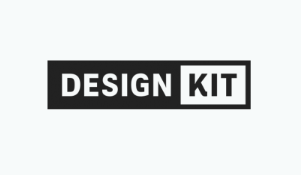Handbooks for understanding the general idea behind design thinking and how to put user understanding at the heart of development activities. This section is meant for people involved in the public service development or anyone wanting to familiarise themselves with the basics of design thinking.
Design Thinking Handbook
The Design Thinking Handbook is a comprehensive guide to the practice of design thinking and framework popularized by the Stanford d.school. The resource is organised into sections Why We Need Design Thinking, Empathize, Define, Ideate, Prototype, Test and it can be downloaded as an epub, PDF, or audiobook, or can be read in a web-based format. The text is supplemented with links to podcasts, videos, interactive exercises, and other related resources to build practice along with knowledge of design thinking.
To access the toolkit, click on the link below, which directs you to the OPSI-site. You do not have to log in, you may scroll down the OPSI-page to have direct access to the toolkit.
The Design Thinking Canvas
A template and a structured approach to plan a design-led strategy and process. It provides an overview of the different elements in a design process and is a systemic technique to collect inputs from a project. This is helpful for the internal communication within a project team as well as externally towards stakeholders. The tool contains 8 elements: People, Storytelling, Challenges, Vision, Impact, Management, Problem, and Solution. The latter two refers to the Double Diamond design process, which is based on the design-driven approach of using the diverging and converging thinking. The canvas is a process design tool to be used during a complete project. The template is downloadable as a PDF, Mural canvas, and Adobe XD whiteboard.
To access the toolkit, click on the link below, which directs you to the OPSI-site. You do not have to log in, you may scroll down the OPSI-page to have direct access to the toolkit.

IDEO Design Kit Field Guide to Human-Centered Design
The Design Kit a downloadable PDF and an online guidance on the different phases of a human-centered design process, organised by Mindsets, Methods (Inspiration, Ideation, Implementation), and Tools. The PDF is only downloadable from the website after creating a user account at IDEO. Website includes instructional videos on the techniques of various user-centered design methods and techniques.
To access the toolkit, click on the link below, which directs you to the OPSI-site. You do not have to log in, you may scroll down the OPSI-page to have direct link to the toolkit.
The DIN model
The DIN model is a methodology for developing solutions using a design-driven approach with the goals of achieving better and more innovative processes and outcomes, increasing probability of implementation, and improving user satisfaction. The model helps explore all the potential pitfalls, possibilities and limitations, particularly in the "front end" or early stage of projects. The DIN model consists of a series of phases and four ‘gates’. Each phase contains a variety of activities and questions, which varies depending on the kind of problem or what ambitions you have for your solution. The model is based on insights from more than 80 innovation and user-driven projects in which Danish Design Centre and/or Mindlab were involved. The Appendix includes several tools based on the methodology.
To access the toolkit, click on the link below, which directs you to the OPSI-site. You do not have to log in, you may scroll down the OPSI-page to have direct access to the toolkit.
